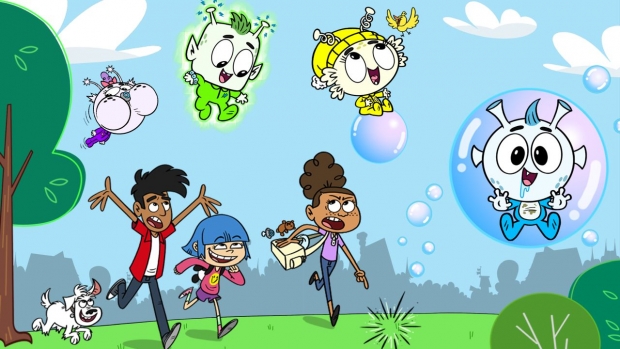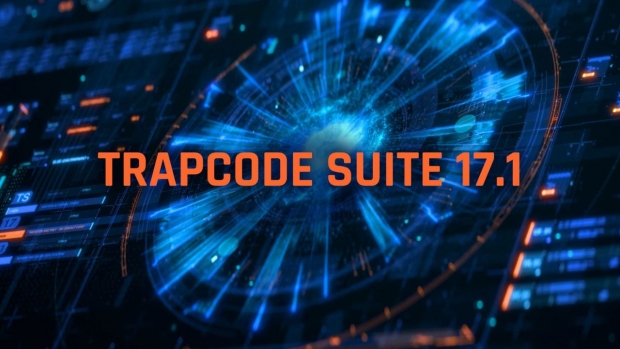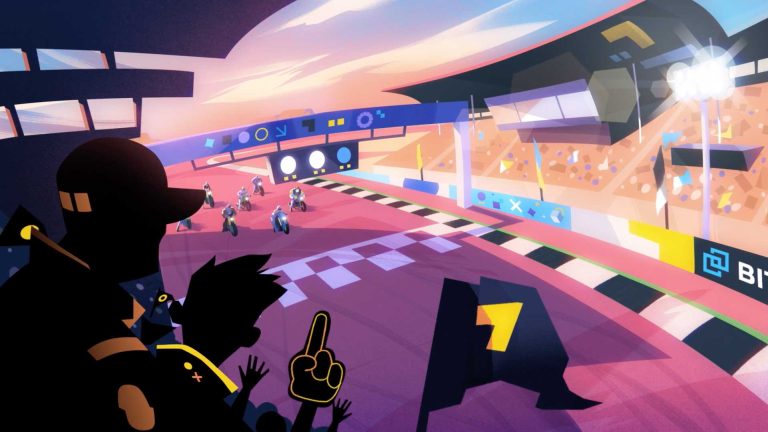Sceptical that algorithms are the enemy? Just consider that if you’re reading this, odds are it’s only because at least one algorithm has let you.

To be an informed individual in 2018 is to know that everything will soon be built on a ‘blockchain’, Silicon valley is actually an enemy of the people, and…Netflix is saving us all from bad entertainment. It’s true isn’t it? Currently revelling in its saviour role, and investing big on animation to boot, the company’s bet on original content is paying off rather handsomely. The explosion in new animated content is good. Employment is always welcome after all. The quality is on par with the cable networks. What isn’t there to love about animation right now?
Nothing apparently.
Yet we’re at a crossroads. Televised entertainment morphed to accommodate cable and satellite networks, and morphed again to add the internet and its wild west, everyone-is-equal egalitarianism. It’s now time to morph again as control of content re-consolidates around a handful of large technology companies who rely heavily on algorithms.
As before, what will change besides the delivery methods, will be the creative aspect of artistic content. Just as cable ushered in the creator-driven golden age, the new OTT era will usher in a new system for devising and delivering shows.
Will it be a watershed? Definitely! This article from Racked discusses the proliferation of big data, algorithms, and the incessant push of both into fashion as something incredibly concerning:
We find ourselves in a cultural uncanny valley, unable to differentiate between things created by humans and those generated by a human-trained equation run amok. In other words, what is the product of genuine taste and what is not.
Silicon Valley companies collect data, lots of it. Netflix is particularly hungry, recording not just what content you’ve watched, but also such details as the format of the screen you use to watch it, every time you start or stop playback, and of course, tying it all to the all-pervasive demographic information they either know or infer from your viewing habits. They’ve kept relatively quiet about this aspect, preferring instead to trumpet their award wins, the high-profile creators they’ve hired to churn out content, and the franchises they reboot.
Make no mistake though, Netflix (and the other tech companies) runs on data and that data fuels algorithms. House of Cards was not chosen because it seemed like a neat idea and Kevin Spacey was (formerly) a bankable star. It was chosen and produced explicitly to make a splash, which it inevitably did. Now you could say that throwing $150 million at a single season of anything is bound to create a few waves, but the cold, rather calculating nature of the decision is only visible in hindsight. It is art, but art designed to achieve a purpose even more narrowly defined than selling ad time. The show literally launched Netflix as a content brand, not merely a distribution one. Their shows since then exude similar levels of polish. Always the right kind of show that the populace is hungry for.
The data drives the art and what the Racked article extrapolates from broader trends in the fashion industry, is that the concepts of taste and style going forward are less likely to embody individual free-will, and more likely to reflect an obscure, secret entity making decisions on data alone. The ultimate fear is that far from hiring talented artists to create, companies will hire temporary employees to produce to a pre-determined formula.
We’ve even been here before in the animation industry. The 70s played host to some utterly banal shows produced to comply with the desires of ACT and their displeasure with violence in children’s television. Creators were hamstrung and studios were stripped of their incentives to innovate and take risks. Hence the repetitive formula featuring a group of mystery-solving teens.
The difference this time around is that instead of setting redlines for content, companies will dictate specifics. They will create a concept replete with details in the minutia and simply find a producing entity to do the hard work for them. Outside sales will be irrelevant since the companies will be producing only for themselves; the result of viewer lock-in.
We’re even experiencing it now. YouTube uses black magic and voodoo to tweak their algorithms in such a way as to screw over creators. The art is subservient to the company’s goals. It does not attract viewers with high-quality, it retains them with good-enough quality the data says will keep viewers coming back.
How badly does such a scenario ultimately hold for the industry? Artists will almost certainly still be necessary of course…except creative freedom will be curtailed. Studios won’t seek out creative skill, but rather technical ability and knowledge. Windsor MacCay lamented his art being transformed into a trade, but little did he know how far that transformation may eventually go.
Going even further than what we’ve already discussed, I wrote a while back about how the future of YouTube in particular was machine-made. Where computers create content automatically and the human element is dispensed with altogether. A dystopian future for sure, but one that already exists as well. Kids videos are clearly on a different level than adult entertainment, but the basic infrastructure is there. How long until the first machine-made TV show for adults premières?
The picture isn’t that hard to imagine: a point in time where Netflix produces shows of infinitesimal genres aimed at incredibly niche audiences, using infallible data that will make them irresistible to watch, and all made by machines programmed with the necessary parameters they need to ensure the desired results. True art becomes sequestered to the arthouse and independent fields devoid of any meaningful audience. Art school becomes for those who have the time and wealth to devote to their passion. The baton of innovation and creative progress will pass from the artists to the programmers. Mainstream tastes will move in a manner more controlled than the Soviets ever fathomed.
Algorithms are the method by which all this come about. They are slowly infecting all facets of life and as the Racked article highlights, are already prevalent in the artistic world of fashion. It’s only a matter of years before they begin to become a truly viable tool for tech companies like Netflix to exploit for profitable purposes.
That is why they are our enemy, and we need to stop and reconsider our slavish devotion to companies holding the keys to the future in their hands. Art, true art, is a keystone of society. It cannot be manufactured, and it certainly cannot be extracted from pools of data. Art occupies a place where immensely powerful connections between disparate human beings are possible. It relies on the human element, and the intrusion of science and data into that space, will deprive us all of something we all sorely need.






